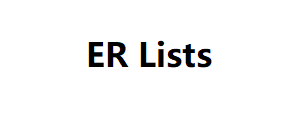Unveiling the Mystery: A Deep Dive into (33)
France, the land of romance, croissants, and rich cultural heritage, also has its own unique way of handling phone numbers. For those unfamiliar with the system, deciphering a French phone number with the prefix 33 can seem like a cryptic code. This expanded article delves deeper into the 33 code, exploring its history, intricacies, and cultural nuances.
A Historical Perspective: The Evolution of the 33 Prefix
The 33 prefix, officially assigned by the Qatar WhatsApp Number International Telecommunication Union (ITU), has a relatively young history compared to France’s rich tapestry. Prior to the 1960s, France relied on a simpler, single-zone numbering system. However, with the country’s economic boom and population growth, the demand for phone lines surged. This necessitated a more sophisticated system to accommodate the growing number of subscribers. In 1961, France adopted the closed numbering plan we see today, with each region or mobile network operator assigned a specific two-digit code, and the 33 prefix serving as the international calling code for the entire nation.
Beyond the Dial Tone: Understanding French Phone Number Anatomy
French phone numbers consist of ten digits, each playing a specific role:
-
The All-Important 33: This two-digit prefix signifies you’re calling a phone number in France. It’s the first point of contact for any international call coming into the country.
-
The Geographic Fingerprint (First Two Digits): Following the 33, the next two digits act as a geographic identifier. These denote the specific region or department within France. For instance, 01 represents Paris, 04 represents Marseille and Lyon, and 05 represents Bordeaux. Mobile network operators also have their own unique two-digit codes (starting from 06 or 07) to distinguish them from landlines.
-
The Unique Subscriber Number (Remaining Eight Digits): The last eight digits represent the unique identifier assigned to a specific landline or mobile phone. This is the number you connect with when reaching a particular subscriber.
Example: Let’s break down the phone number for the Louvre Museum in Paris, which is (33) 1 44 58 00 00:
- 33: International calling code for France
- 1: Area code for Paris
- 44 58 00 00: Subscriber number for the Louvre Museum
Nuances of Domestic Calls: Simplifying Communication Within France
When making calls within France, the process becomes slightly less complex. Since the first two digits (area code or mobile network code) are already embedded in the local phone number, you only need to dial the eight-digit subscriber number.
Example: Imagine you’re at a cafe in Paris and want to call a friend’s mobile phone. Their number is 06 78 90 12 34. You simply dial these eight digits, and the call will connect you to your friend. The 33 and 01 (Paris area code) are understood implicitly within the French domestic calling system.
Stepping Outside the Hexagon: Making International Calls from France
Placing international calls from France follows a similar logic, but with a few additional steps. You’ll need the international calling code for the destination country followed by the subscriber number. The handy “00” prefix serves as the international Australian phone number list access code in France, allowing you to connect to phone networks outside the country.
Example: You’re calling a friend in New York City (US) from your hotel in Paris. The international calling code for the United States is 1. Their phone number is 212 345 6789. The complete dial string would be:
- 00: International access code for France
- 1: International calling code for the United States
- 212: Area code for New York City
- 345 6789: Subscriber number for your friend in New York
Remember: Double-check the specific international calling code for the country you’re reaching out to before making the call.
A Touch of French Finesse: Phone Etiquette Beyond Numbers
Understanding the dialing system is essential, but a sprinkle of French phone etiquette can elevate your communication experience. Here are some helpful tips:
- Greetings: A polite “Bonjour, Monsieur/Madame” (Hello, Sir/Madam) sets a positive tone for the conversation. If you know the recipient’s name, use it after the greeting.
- Clarity is Key: French




